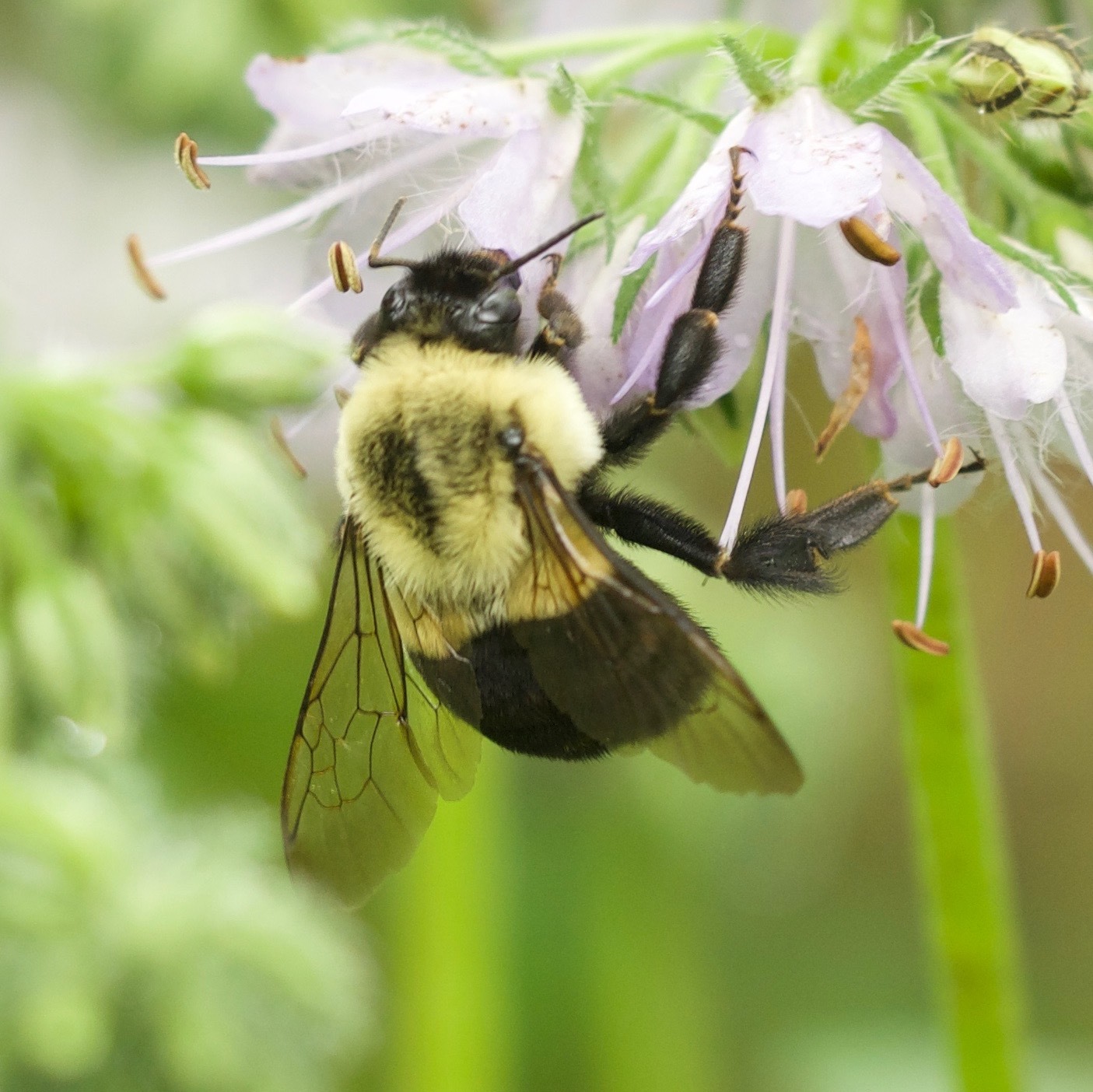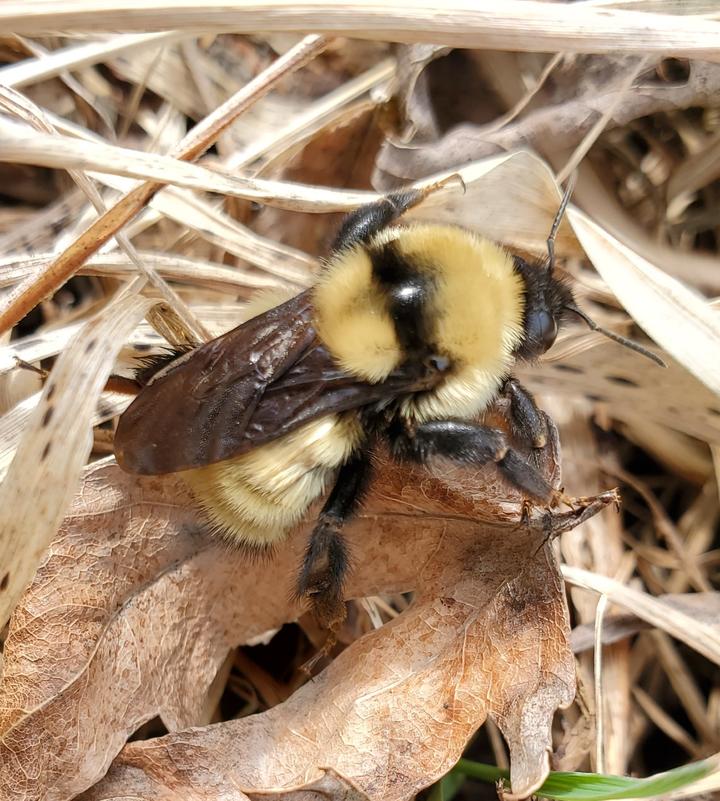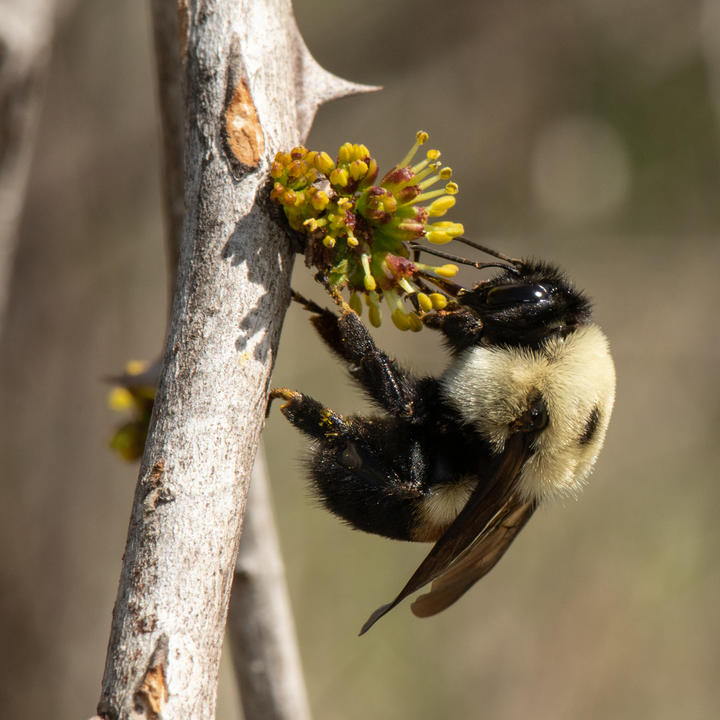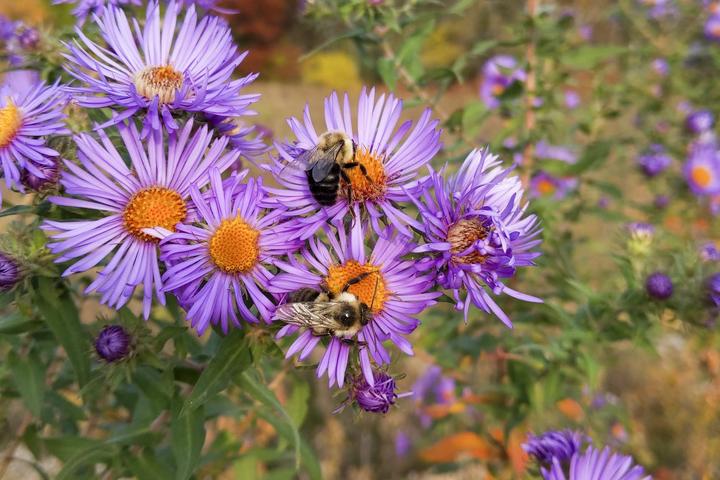More names for this animal
Anishinaabemowin: Aamoo (bee or wasp)
Dakota: Tuḣmaġa taåka
The Dakota and Anishinaabe were among the earliest people to name Minnesota’s plants and animals, as well as to understand them in relation to Minnesota’s climate and seasons. Those original names are still in use, and several are included on the Season Watch website.
Latin (or scientific name): Bombus (Bombus is the name of a genus with many species, several of which live in Minnesota.)
The scientific community has a convention of assigning agreed-upon Latin names to every kind of organism. Using scientific names helps people communicate confidently about the same organism and organize lifeforms based on how closely related they are.
Page contents

May 17, 2017, Rice County, Minnesota
Photo © Scott King, some rights reserved (CC-BY-NC)
iNaturalist observation
About bumblebees
- Minnesota is home to twenty-four different bumblebee species. Bumblebees are large insects with fuzzy bodies. Different bumblebee species have varying patterns of yellow, red, and black stripes or dots.
- Bumblebees have a symbiotic relationship with their main food source: flowers. They harvest energy-rich nectar from the flowers, and in return, they spread pollen as they travel from flower to flower.
- Bumblebees are social insects that live in colonies. Colonies are made up of a queen that lays eggs, male drones that typically stay in the hive, and female worker bees which collect food.
- Bumblebees turn nectar into honey and store it in hexagon-shaped honeycombs. The honey is stored so the bees have something to eat in winter. Honey can vary in flavor and color depending on what kind of flower nectar was harvested
- Unfortunately, many native bumblebees are under threat due to habitat loss, disease, pesticides, and climate change. Bumblebees are incredibly important pollinators, and many communities and organizations are taking steps to protect them.
- Fun fact: The rusty patched bumble bee is Minnesota’s state bee. This is the first bee to be granted protection as an endangered species by the United States government.
Visual guide to phenology
Watch for bumblebees' presence (or absence) and abundance at different times of year.
Note to observers
This page explains general clues to watch and listen for when observing bumblebee phenology. However, this page does not explain how to identify bumblebees or collect data in a standardized way.
- Consult a field guide for help with identification.
- For guidance on collecting data, see Nature’s Notebook.
More resources
Keep exploring Season Watch
Keep exploring Season Watch
Co-author: Audrey Negro, Minnesota Master Naturalist



